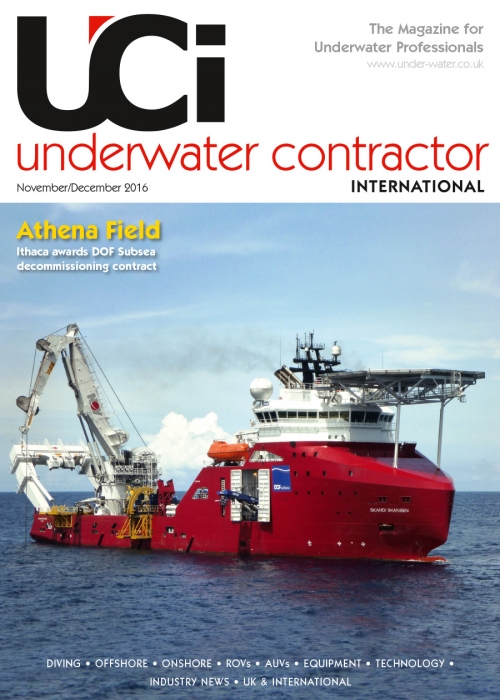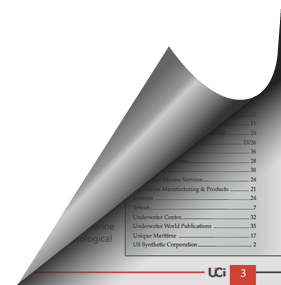
The Magazine for Underwater Professionals
![]() May/Jun 2015
May/Jun 2015
PRODUCT EYEBALL
UK innovator develops novel system to help reduce cost of marine energy
New cable installation device 75% lower cost than current mechanisms used by industry
UK-based North Sea Systems has successfully completed the first full scale trial of its novel CableFish, which was put through its paces at the European Marine Energy Centre (EMEC) in the turbulent waters around Orkney, Scotland. The trial was the culmination of a Marine Renewables Commercialisation Fund (MRCF) project funded by the Scottish government and managed by the UK Carbon Trust.
Developed to make subsea cable installation more reliable and cost effective, CableFish is a radically new concept for installation of cables in high flow tidal environments.
The CableFish is attached to the cable, then rides down from the installation vessel to the touchdown point (the point at which the cable meets the seabed). Movement up and down the cable is controlled by a proprietary winch device. The system is equipped with cameras, an altimeter, a motion sensor, a USBL beacon; and high power lights for night work. Real-time data is fed back directly into the installation vessels’ survey system.
ASSIST
Scottish Energy Minister Fergus Ewing says: “I am very pleased that we were able to assist in the development of this innovative cable installation technology with our Marine Renewables Commercialisation Fund.
“Developers who are trying to generate clean, green power from our oceans face many challenges, and the Scottish government is committed to supporting collaborative efforts to find solutions to these problems. CableFish will help reduce the costs and risks of installing cables in the first array projects, such as MeyGen’s (UK) tidal energy project in the Pentland Firth. Innovation is a crucial part of cost reduction and I am glad to have supported this promising new concept.”
Andrew Lever, director of innovation at the Carbon Trust, says: “The successful sea trial of CableFish is a great example of collaborative innovation, which has demonstrated tangible cost reduction to support first tidal technology arrays and in doing so further progresses the marine sector towards commercialisation.”
Ben Baker, project manager at North Sea Systems, adds: “We were delighted to have secured the MRCF funding from the Carbon Trust. Throughout the CableFish project the Carbon Trust’s support has been invaluable, not only from a financial perspective; but also with marketing and business development opportunities. CableFish is now a fully commercial system. Reaching this milestone would not have been possible without the Scottish government’s funding through the MRCF and the wider support provided by the Carbon Trust.”
OPERATE
CableFish significantly de-risks cable installation by providing continuous visual and position monitoring of the touchdown point in up to six knots of tidal flow, providing a considerably higher operation window than using ROVs which can only operate in up to two knots of tidal flow. CableFish enables significant cost savings as it negates the need for ROVs and post-lay surveys and is simple to deploy and operate.
The first tidal arrays currently being designed are based on a single cable to each tidal energy converter. Tidal flow moves any loose sediment, therefore the seabed geology in tidal sites tends to be hard craggy rock. Without a visual cue to guide the cable lay there is a strong possibility the cable will be suspended across two high points which will leave the cable prone to failure due to strumming.
Typically it costs GB£1 million to procure and install a two-kilometre cable in a tidal site. This amounts to a tenth of the overall expenditure of capital costs associated with a single 1.5-megawatt tidal turbine. Damaged cables are replaced in their entirety therefore the effective installation is imperative to reduce project costs.
The installation of subsea cables in shallow waters is notoriously risky as it is impacted by a number of factors including unpredictable sea states, uneven seabed and strong tides. Improving the reliability and accuracy of cable installations will bring down the cost of the offshore construction works, which will in turn reduce the cost of marine energy.


